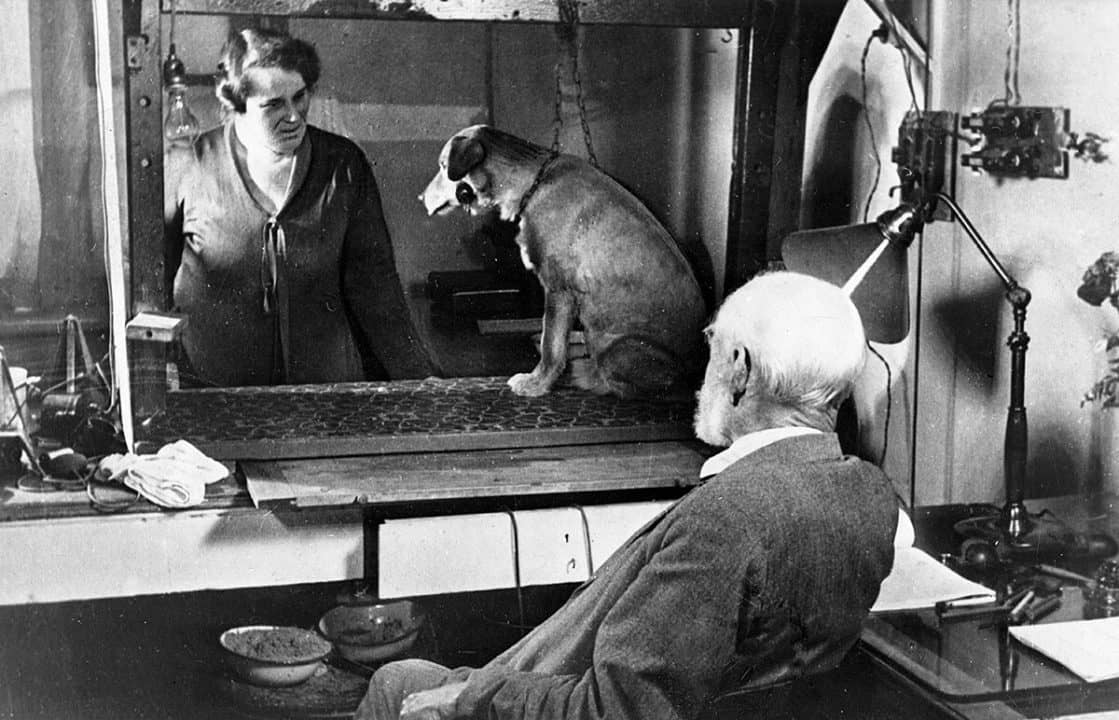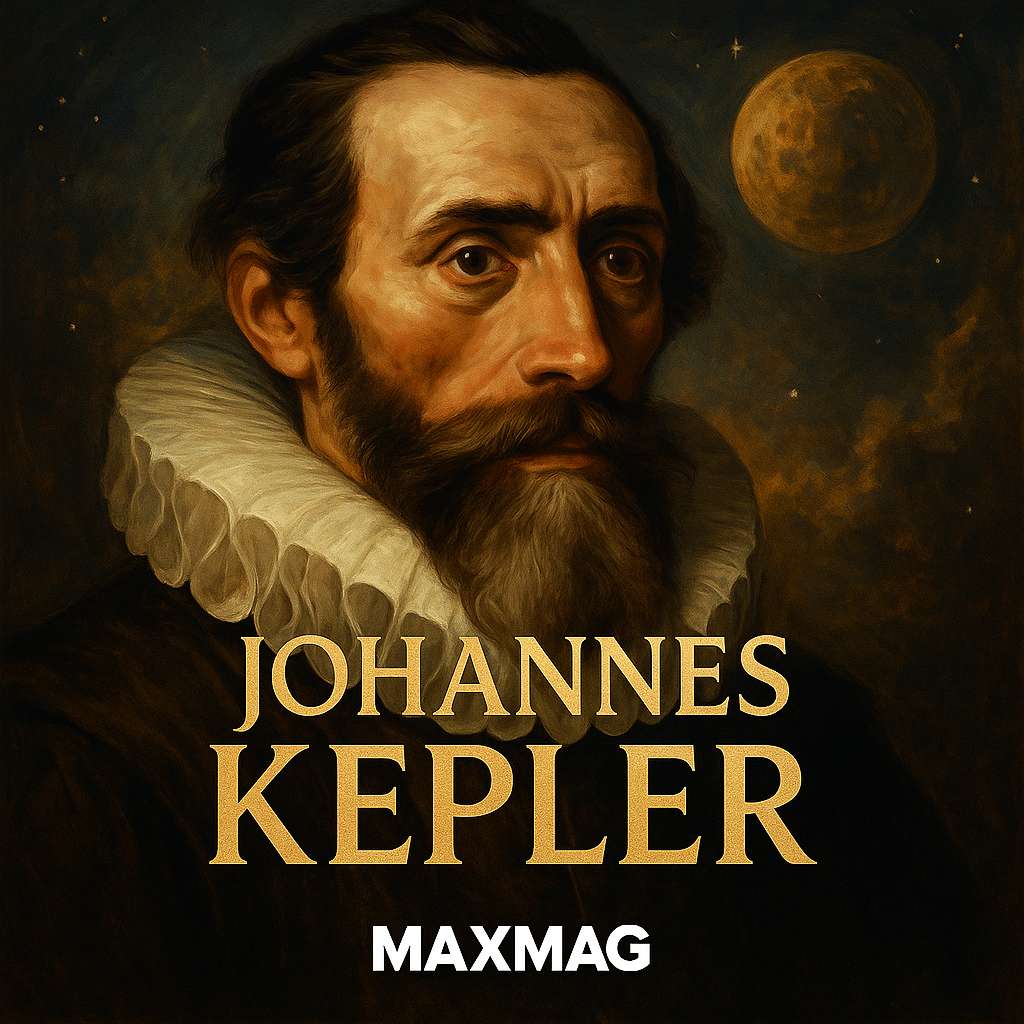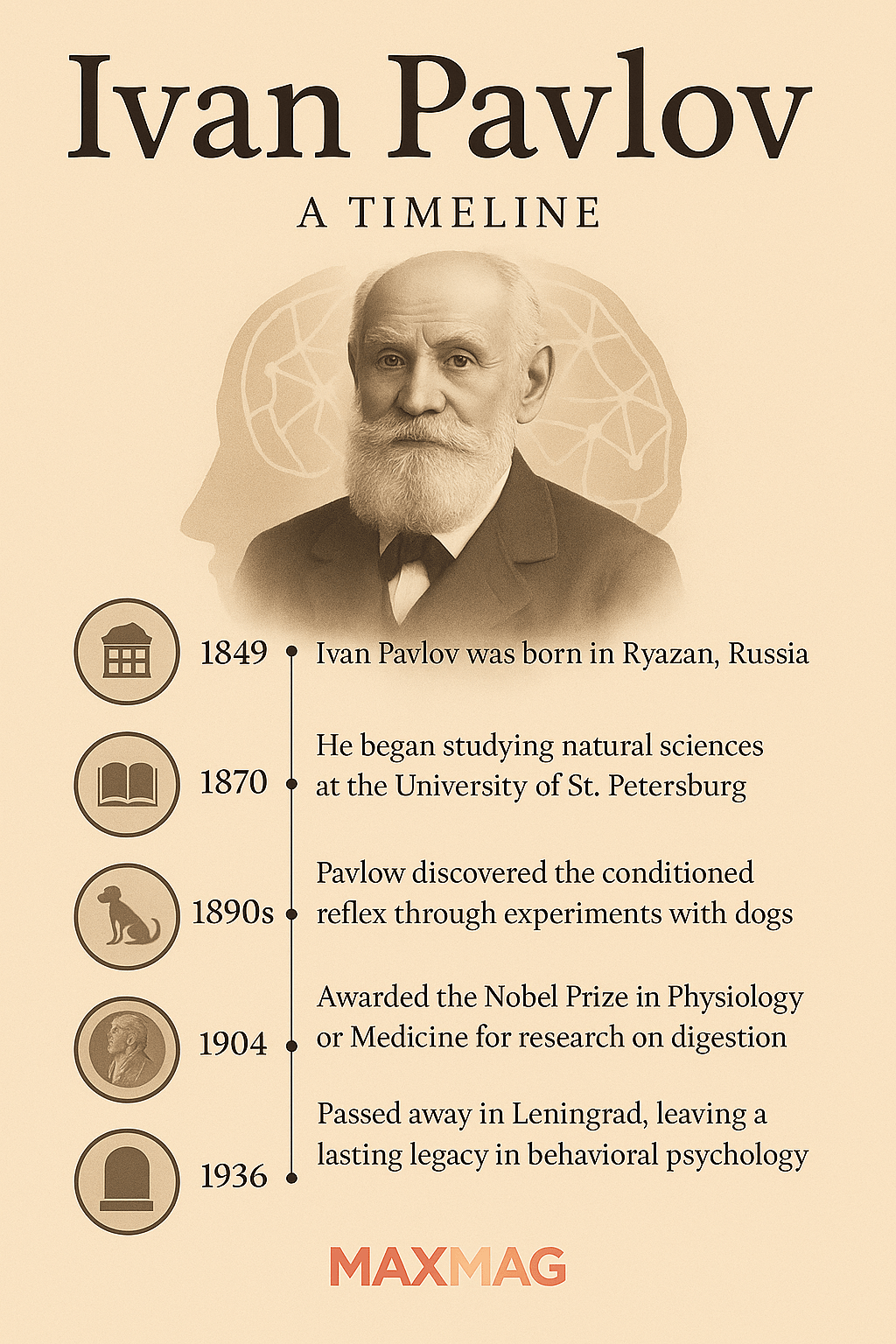
Ivan Pavlov’s legacy extends far beyond his famous experiment with dogs and bells. His work laid the scientific foundation for what became a full-blown behavioral psychology revolution—a transformation that shifted psychology away from introspective speculation toward empirical, observable evidence. Pavlov’s discovery of classical conditioning redefined the way scientists understand learning and remains a cornerstone of behavioral science today.
The Pavlov Behavioral Psychology Revolution Begins
Ivan Petrovich Pavlov (1849–1936) was not a psychologist by training. He was a Russian physiologist, originally studying the digestive systems of animals. While researching the saliva responses of dogs to different types of food, Pavlov noticed something unusual: the dogs began salivating before they were even fed—sometimes just upon hearing footsteps or seeing lab assistants in white coats.
This response had no physical trigger—no food, no taste—just expectation. Intrigued, Pavlov designed an experiment using a neutral stimulus: a bell. After repeatedly pairing the bell with food, the dogs began salivating at the sound alone. This became known as a conditioned reflex, and with it, Pavlov had stumbled upon a new form of learning: classical conditioning.
His meticulous experiments, including controlled settings and precise measurements, represented a major shift in scientific psychology. No longer would theories rely on subjective interpretation. Behavior could now be measured, replicated, and predicted—sparking the Pavlov behavioral psychology revolution.
H2: How the Pavlov Behavioral Psychology Revolution Shaped Science and Society
Pavlov’s insights fundamentally reshaped scientific thinking across disciplines. Though his original goal was understanding digestion, his discovery of associative learning set the groundwork for how we treat phobias, teach students, and train animals today.
Birth of Behaviorism
Inspired by Pavlov, psychologists like John B. Watson and B.F. Skinner expanded the framework into behaviorism, emphasizing observable behavior over internal thoughts. Watson famously said, “Give me a dozen healthy infants… and I’ll guarantee to train any one of them to become any type of specialist I might select.” This bold claim stemmed directly from Pavlovian principles.
Therapeutic Applications
Modern clinical psychology owes a huge debt to Pavlov. Techniques like exposure therapy, systematic desensitization, and aversive conditioning all draw from classical conditioning. These therapies are used to treat phobias, PTSD, addiction, and anxiety disorders. Even today, organizations like the American Psychological Association recommend behaviorally grounded therapies for a range of mental health conditions.
Everyday Life and Education
Teachers and parents use Pavlovian methods, often without realizing it. From school bells signaling class changes to reward charts that encourage good behavior, classical conditioning helps structure effective learning environments. The marketing world, too, applies Pavlovian theory—associating pleasant music or imagery with products to trigger emotional responses in consumers.
H2: Why the Pavlov Behavioral Psychology Revolution Still Matters Today
1. It Made Psychology a Science
Before Pavlov, much of psychology relied on introspection or philosophical argument. His work marked a decisive turn toward empirical observation and experimentation, aligning psychology more closely with biology and neuroscience.
2. It Bridges Biology and Behavior
Pavlov’s experiments connected the nervous system with observable behavior, influencing fields like neuropsychology and behavioral neuroscience. Today, researchers studying neural pathways involved in learning and memory frequently refer back to Pavlov’s concepts.
3. It Continues to Evolve
Though some aspects of classical conditioning have been refined—such as with the Rescorla-Wagner model, which adds cognitive processing into the learning equation—Pavlov’s framework remains essential for understanding automatic responses and habit formation.
4. It Changed How We See Behavior
By revealing how neutral cues can trigger profound reactions, Pavlov helped explain emotional conditioning, like trauma responses and irrational fears. This has revolutionized how we understand psychosomatic illness, performance anxiety, and even advertising psychology.

Understanding the Core Concepts of Classical Conditioning
Here’s a breakdown of how Pavlov’s process works:
-
Unconditioned Stimulus (UCS): Something that naturally provokes a reaction (e.g., food).
-
Unconditioned Response (UCR): The natural reaction (e.g., salivating to food).
-
Conditioned Stimulus (CS): A previously neutral cue (e.g., a bell) that becomes associated with the UCS.
-
Conditioned Response (CR): The learned response to the CS alone (e.g., salivating at the bell).
Other essential concepts include:
-
Acquisition: The process of forming the association.
-
Extinction: When the learned response weakens over time if not reinforced.
-
Spontaneous Recovery: The reappearance of the conditioned response after extinction.
-
Generalization: Responding to stimuli similar to the conditioned one.
-
Discrimination: Learning to respond only to the specific stimulus, not others.
These principles still form the foundation of behavior modification programs used in schools, therapy, and even correctional facilities.
A Balanced View: Strengths and Critiques of Pavlov’s Theory
While Pavlov’s work was groundbreaking, it wasn’t perfect.
Criticisms:
-
It’s mechanistic, reducing behavior to simple stimulus-response chains.
-
It neglects cognition—thoughts, beliefs, and intentions are crucial in human behavior.
-
Emotional complexities and social influences are underrepresented.
Yet even these criticisms led to further advances. The emergence of cognitive-behavioral therapy (CBT), which combines Pavlovian principles with cognitive science, shows how his model evolved—not vanished. Modern neuroscience has also validated his assumptions about the brain’s plasticity, showing how associative learning changes neural circuits.
FAQ: Understanding the Pavlov Behavioral Psychology Revolution
Q1: What exactly is classical conditioning?
It’s a learning process where a neutral stimulus becomes associated with a natural response through repeated pairings, eventually triggering that response on its own.
Q2: How did Pavlov change psychology?
He shifted the field toward measurable, experimental science by focusing on observable behavior rather than internal thoughts or emotions.
Q3: What are real-world uses of classical conditioning?
From phobia treatments to marketing strategies, classical conditioning is used in therapy, education, animal training, and advertising.
Q4: Is Pavlov’s work still relevant?
Absolutely. His principles are used in modern psychology, behavioral therapies, neuroscience, and education worldwide.
Q5: What are the limits of Pavlov’s theory?
It doesn’t fully explain complex human behaviors influenced by emotion, thought, or culture—but it remains a vital piece of the puzzle.
Q6: How is Pavlov’s legacy viewed today?
He’s considered one of the founders of experimental psychology and behaviorism. His influence continues through research and practice.





